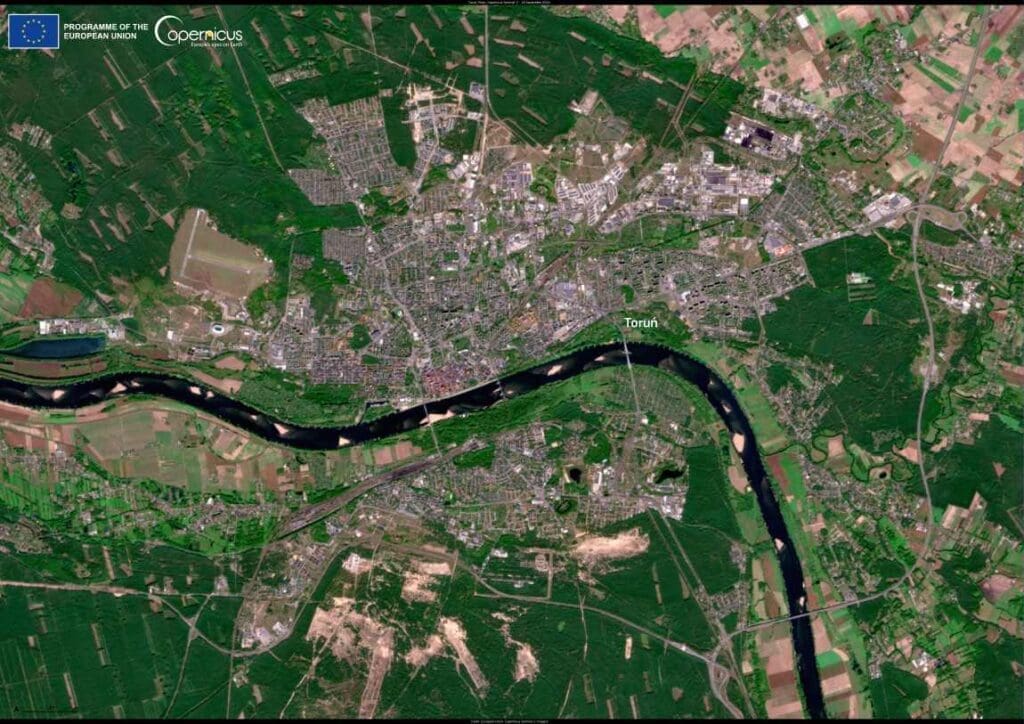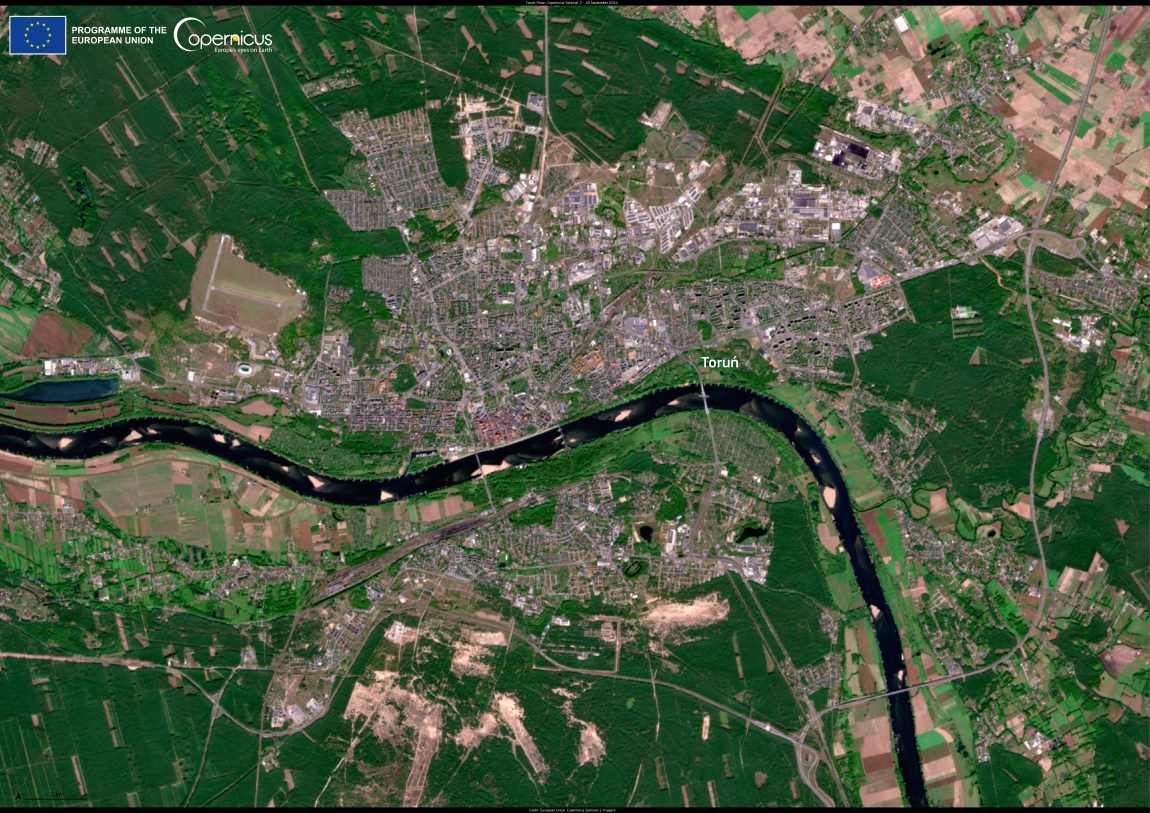Perched on the banks of the Vistula River in north-central Poland, Toruń boasts a legacy that intertwines history, science, and culture. As one of Poland’s oldest cities, it flourished during the Teutonic Order’s expansion in Eastern Europe and remains a treasure trove of medieval architecture. Its Gothic Old Town, Teutonic Castle, and New Town together form a UNESCO World Heritage Site, exemplifying a trading and administrative hub of medieval Europe.
Toruń holds a special place in the history of science as the birthplace of Nicolaus Copernicus, born in 1473. The astronomer’s revolutionary heliocentric theory transformed our understanding of the universe and remains a cornerstone of modern science. Appropriately, the European Union’s Copernicus Earth Observation program carries his name, continuing his legacy of exploring the cosmos — though with eyes firmly fixed on Earth.

Captured by the Copernicus Sentinel-2 satellites on September 18, 2024, this image of Toruń underscores the importance of space-based monitoring in safeguarding global cultural heritage. Sentinel satellites provide vital data on land use, environmental changes, and even ground stability, all essential tools in preserving historic sites like Toruń from threats such as urbanization, erosion, and climate impacts.
Through the lenses of Copernicus satellites, Toruń’s medieval charm and enduring scientific legacy continue to inspire, connecting humanity’s past achievements with the urgent task of protecting our shared heritage in the face of a changing planet.
Featured image credit: European Union, Copernicus Sentinel-2 imagery




